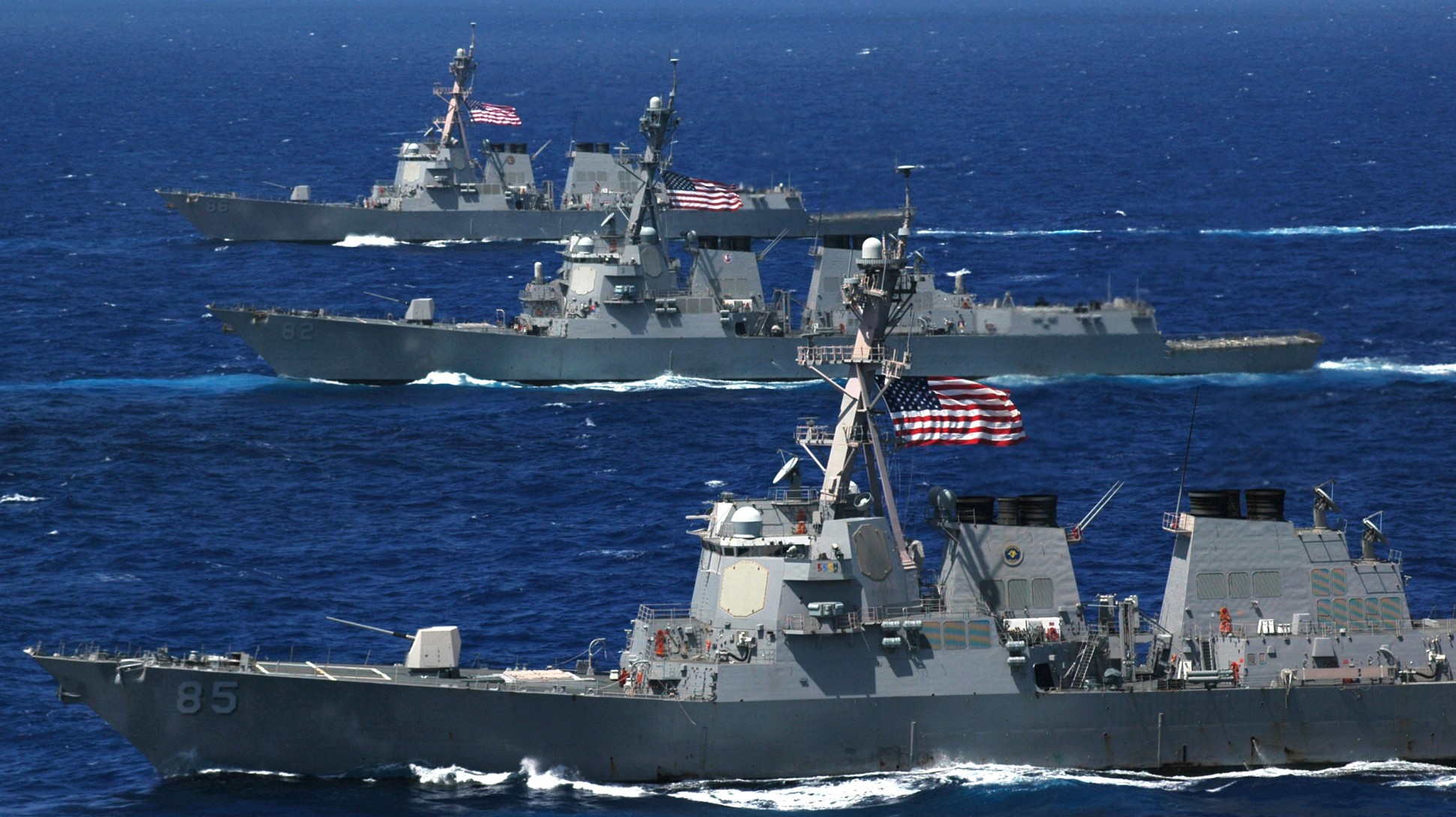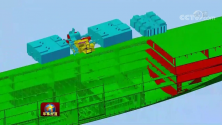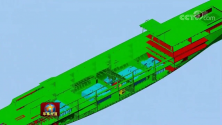Oh please, has any modern ship demonstrated the ability to continue fighting after being hit with modern anti-ship missiles? Was USS Stark able to fight after gotten hit?Those main engine ventilation stacks seem dangerously close to each other for such a big ship. A single ASCM could smash both funnels and disable the main propulsion of the ship. Compare that to the widely separated funnels on the Ticonderoga class cruiser. Even the much smaller Asahi class have more separation between their funnels. Unfortunately, other PLAN combatants are even worse in this regard. It's as if PLAN doesn't place much emphasis in their ships being able to take a hit and continue on to fight?
You are using an out of date browser. It may not display this or other websites correctly.
You should upgrade or use an alternative browser.
You should upgrade or use an alternative browser.
055 DDG Large Destroyer Thread
- Thread starter FarkTypeSoldier
- Start date
- Status
- Not open for further replies.
Those main engine ventilation stacks seem dangerously close to each other for such a big ship. A single ASCM could smash both funnels and disable the main propulsion of the ship. Compare that to the widely separated funnels on the Ticonderoga class cruiser. Even the much smaller Asahi class have more separation between their funnels. Unfortunately, other PLAN combatants are even worse in this regard. It's as if PLAN doesn't place much emphasis in their ships being able to take a hit and continue on to fight?

How far do you think the Arleigh Buke's smoke stacks are separated apart? I see just about width of one stack. 055 gap is bigger than that.
Are you then going to say that the USN was stupid when they designed the newer class after Ticonderoga? Is USN not placing emphasis in their ships being able to take a hit and continue on to fight?
Please, look around firstly.
Please measure it in meters/feet, before claiming that the gap on the 055 is larger. Below decks, on the DDG-51 there is one compartment between the main engine rooms. Same as on the 055, based on published diagrams. I don't know if it is an advantage that the smoke stacks are structurally disconnected when it comes to containing fire spread.
How far do you think the Arleigh Buke's smoke stacks are separated apart? I see just about width of one stack. 055 gap is bigger than that.
Are you then going to say that the USN was stupid when they designed the newer class after Ticonderoga? Is USN not placing emphasis in their ships being able to take a hit and continue on to fight?Or the JSDFN is smarter than USN?
Please, look around firstly.
Ticonderoga class cruisers have a lot more redundancy in their systems than the Arleigh Burke destroyers. The USN made a deliberate decision to make a cheaper platform that can be procured in larger numbers. Below deck, Ticonderoga cruisers have two compartments separating the main engine rooms. My assertion that there are ships that appear to have better survivability of their propulsion than the 055 stands.
Speaking of new ships, the USN's new Constellation frigate appears to have a very wide spacing between its engine rooms, based on the placement of the two smoke stacks.
Last edited:
I did some measurements, and this is what I found:
1. Type 055. 8.7m of separation between top funnel edges
2. DDG-51 FLIIA. 9.75m of separation between top funnel structure edges, or 10.35m between the closest vents.
3. Ticonderoga CG. 24m of separation between top funnel edges.
1. Type 055. 8.7m of separation between top funnel edges
2. DDG-51 FLIIA. 9.75m of separation between top funnel structure edges, or 10.35m between the closest vents.
3. Ticonderoga CG. 24m of separation between top funnel edges.
Last edited:
Why would a ships propulsion stop if the smokestacks were destroyed...
Better VLS layout and weapons fit out along with sensor positioning is FAR more important than considering the what if a missile hits a smokestack.
Most anti-ship missiles are going for much lower around the water line. Most threats are air and subsurface based... especially US ones. China is dealing with the US so sensors and VSL take much greater priority in arrangement design.
There is almost a zero chance of a harpoon hitting the smokestack when you consider a harpoon is going for the waterline. Analyst... you are not living up to your intellectual claims of grandeur. A bit Jai Hind but try harder.
Any ship struck by bombs or torpedoes is either a goner or completely mission killed. The whole point is not to get hit and NOT to minimise damage and take hits. Maybe that's the Indian thinking from the WW2 battleship era. These days, interceptors aim to fight the battle many kilometers away from the ship and networked assets many hundreds of kilometers away.
Most anti-ship threats to PLAN vessels are airborne and subsurface. Therefore the smokestack can be packed right next to each other and it would make a close to zero difference overall. Even in the case of considering for anti-ship missiles, almost all modern and capable anti-ship missiles go for the waterline when they home in.
Except maybe for brahmos which still uses wide arc attack trajectories until home in and even then, it's sea skimming is of a much older generation compared to the already old C-802 era stuff.
Analyst, consider all this a free lesson in logic and military history.
Most anti-ship missiles are going for much lower around the water line. Most threats are air and subsurface based... especially US ones. China is dealing with the US so sensors and VSL take much greater priority in arrangement design.
There is almost a zero chance of a harpoon hitting the smokestack when you consider a harpoon is going for the waterline. Analyst... you are not living up to your intellectual claims of grandeur. A bit Jai Hind but try harder.
Any ship struck by bombs or torpedoes is either a goner or completely mission killed. The whole point is not to get hit and NOT to minimise damage and take hits. Maybe that's the Indian thinking from the WW2 battleship era. These days, interceptors aim to fight the battle many kilometers away from the ship and networked assets many hundreds of kilometers away.
Most anti-ship threats to PLAN vessels are airborne and subsurface. Therefore the smokestack can be packed right next to each other and it would make a close to zero difference overall. Even in the case of considering for anti-ship missiles, almost all modern and capable anti-ship missiles go for the waterline when they home in.
Except maybe for brahmos which still uses wide arc attack trajectories until home in and even then, it's sea skimming is of a much older generation compared to the already old C-802 era stuff.
Analyst, consider all this a free lesson in logic and military history.
Last edited:
An antiship missile will likely head where its return signal is at the strongest, and that's the part of the ship where it has the highest radar cross section. Clue, that isn't where the funnel is. Second clue, that's close to where the ECM is placed at. Third, that's why the ECM is placed there in the first place.
Harpoon is just one missile PLAN should be worried about. SM-2 and SM-6 will hit the ship from a plunging trajectory. NSM can be programmed to hit any desired point on the ship, including the smokestacks if that's desired. Probably the same for the LRASM and the upcoming JSM. And that's just the US threat.Better VLS layout and weapons fit out along with sensor positioning is FAR more important than considering the what if a missile hits a smokestack.
Most anti-ship missiles are going for much lower around the water line. Most threats are air and subsurface based... especially US ones. China is dealing with the US so sensors and VSL take much greater priority in arrangement design.
There is almost a zero chance of a harpoon hitting the smokestack when you consider a harpoon is going for the waterline. Analyst... you are not living up to your intellectual claims of grandeur. A bit Jai Hind but try harder.
You are making things up now. Look at the Type 003 under construction and how far away the MERs are spaced. That is with the intent purpose for the ship to weather blast/flooding damage in that compartment and at the very least keep on steaming if not fighting. A ship dead in the water is a major liability. If the threat environment is unfavorable, they typically end up scuttled by their own side.Any ship struck by bombs or torpedoes is either a goner or completely mission killed. The whole point is not to get hit and NOT to minimise damage and take hits. Maybe that's the Indian thinking from the WW2 battleship era. These days, interceptors aim to fight the battle many kilometers away from the ship and networked assets many hundreds of kilometers away.
Even the Type 055 has a compartment of separation between its MERs. That's evidence that they do care about battle damage.
Smokestack separation correlates with MER separation. Sometimes, if volume is available, additional ducting can be used to increase separation. Based on diagrams published by CCTV, they don't seem to have increased the separation by much if at all compared to the smokestacks:


A torpedo hit in the middle compartment where the clutches and reduction gear(?) appear to be located stands a good chance to cripple the main propulsion.
They don't, as I've pointed out above.Most anti-ship threats to PLAN vessels are airborne and subsurface. Therefore the smokestack can be packed right next to each other and it would make a close to zero difference overall. Even in the case of considering for anti-ship missiles, almost all modern and capable anti-ship missiles go for the waterline when they home in.
I beg your pardon. What did you say your credentials were?Analyst, consider all this a free lesson in logic and military history.
Not if the missile uses optical guidance, like the NSM.An antiship missile will likely head where its return signal is at the strongest, and that's the part of the ship where it has the highest radar cross section. Clue, that isn't where the funnel is. Second clue, that's close to where the ECM is placed at. Third, that's why the ECM is placed there in the first place.
- Status
- Not open for further replies.
